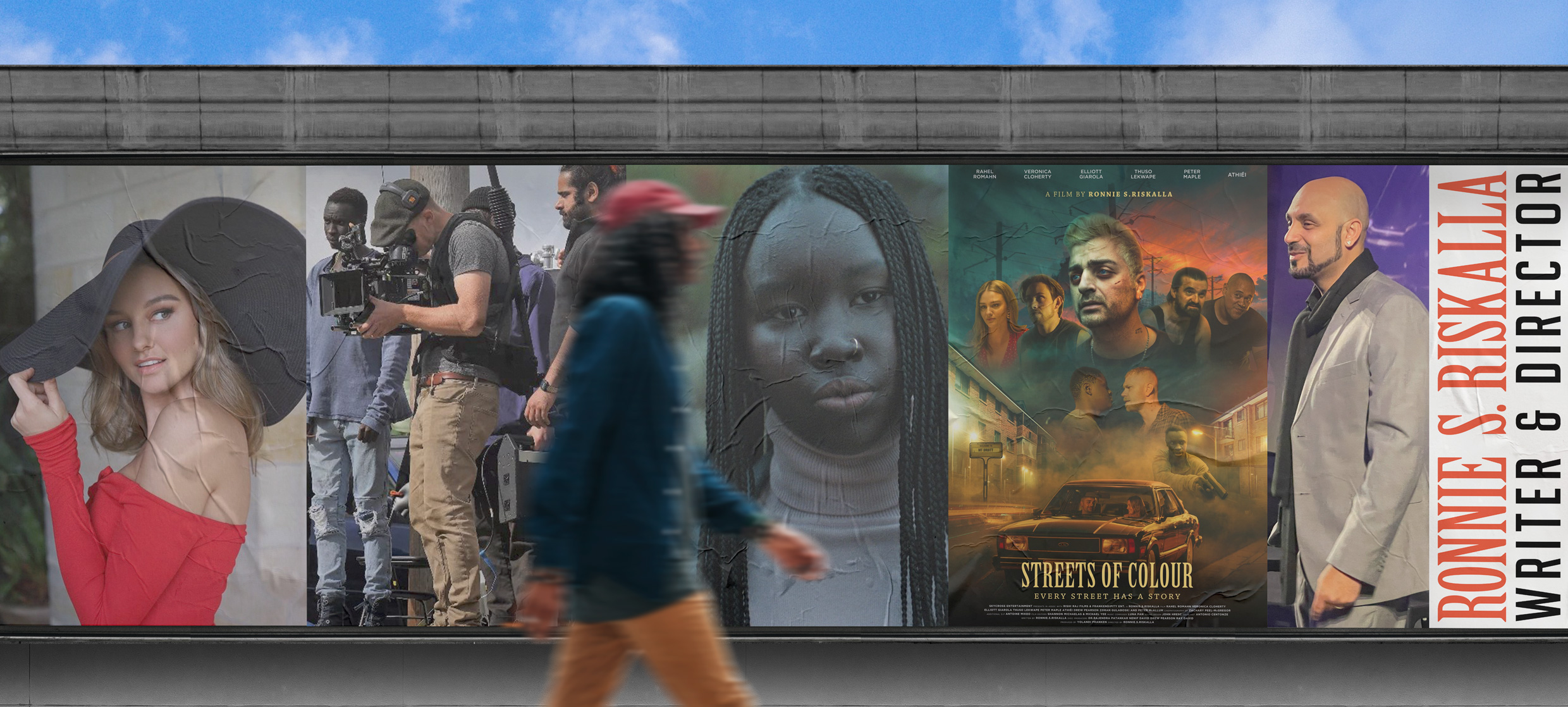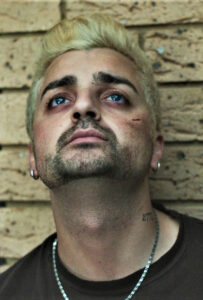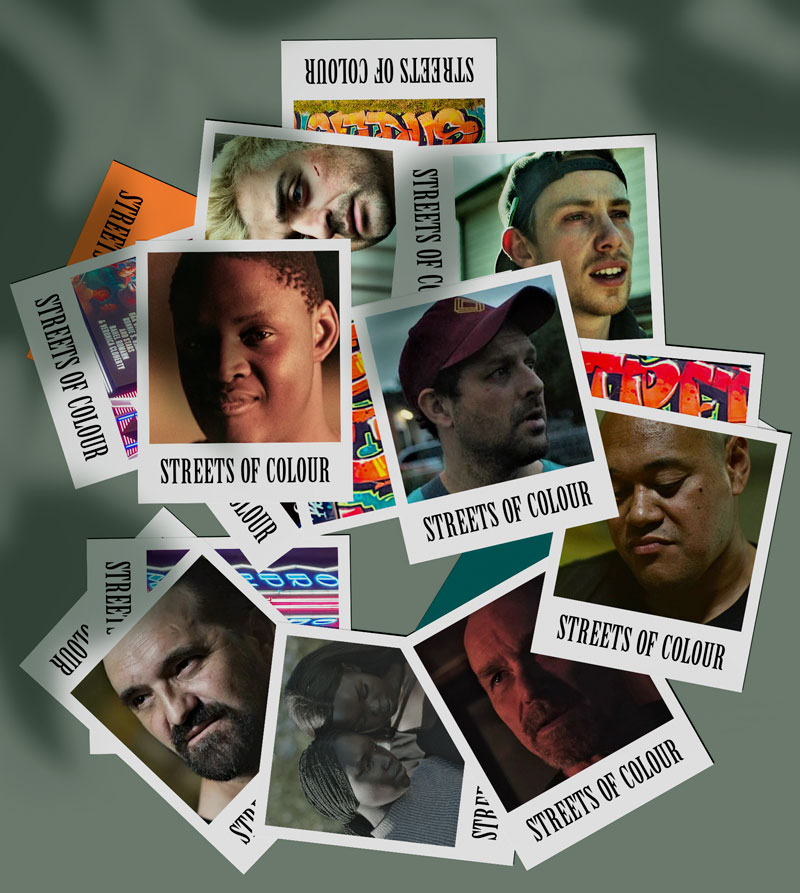Ronnie S. Riskalla’s new film captivates, disturbs, and inspires.
The spark for Streets of Colour flared several years ago, when Riskalla observed a thirteen-year-old boy hurl abuse at him. It brought back sad memories of his own childhood, growing up in Mount Druitt amidst racism, culture wars, and intolerance towards anyone who was “different” or who belonged to another clan.
At the World Premiere held in Australia at the Hayden Orpheum to a full house, the film packed a punch; starting with its curious opener, followed by a charged dialogue, enveloped by foreboding music.
While the launch-pad for the film was the confounding subject of “racism”, the story was a map on which we could discover parts of our own lot — whether as youths at school, or children at home, wondering why everything was so challenging and overwhelming.

The lead character (Tez Hadid) was brought to life by the remarkable Rahel Romahn who immersed himself beyond the point of believability to trigger our emotions. In a dark cinema, the sniffles unmasked teary eyes that winced at Tez’s turbulent journey and self-inflicted torment.
While the title of the film hints at racism, Riskalla made it clear during an interview that he was not focussing on conflict between black and white neighbours. Rather, he wanted to shine a torch on the unfathomable clashes amongst the myriad cultures within the tapestry of Australia’s multicultural society. As one attendee noted, those who exhibit hatred and cruelty are themselves from “overseas”. The attendee added that there’s relief in realising that racists hate everyone equally.
 Tez is a young man who struts the suburb, sporting dyed-blonde hair, and blue contact lenses. He wants to blend-in to obscure his visage as a wog. That does not work for him. His anxiety reminded me of my days at school. Those who had heralded from parts of the northern hemisphere were made to feel that the blonde-haired blue-eyed boys represented the master race. The College Captain and all-round academic and sporting gold medallist was indeed the dapper blonde Adonis from a well-to-do family. The pressure and tumult was so unpleasant for me, that I left school at the end of Year 9 (at fourteen years of age) to study part-time amongst adults, and work full-time six days per week.
Tez is a young man who struts the suburb, sporting dyed-blonde hair, and blue contact lenses. He wants to blend-in to obscure his visage as a wog. That does not work for him. His anxiety reminded me of my days at school. Those who had heralded from parts of the northern hemisphere were made to feel that the blonde-haired blue-eyed boys represented the master race. The College Captain and all-round academic and sporting gold medallist was indeed the dapper blonde Adonis from a well-to-do family. The pressure and tumult was so unpleasant for me, that I left school at the end of Year 9 (at fourteen years of age) to study part-time amongst adults, and work full-time six days per week.
Twenty years later, after I had erased some memories, I received an email from that blonde Captain who had seen me on television. We enjoyed a luncheon and reminisced about the days of yore. The conversation traversed the topics of student popularity, confidence, and success. He hinted that he had always admired my focus and abilities. I remarked upon his leadership and status within the college. It stunned me to hear him confess that he was never happy… always troubled… depressed by his abhorrent home-life… confused by his disingenuous friends… while feeling lost and insecure, and envious of us “wogs” who seemed to cope, fight, and triumph. How’s that for a revelation! If only Tez knew what troubles agitated the hearts of those ghastly “bogans” who rejected his kith and kin.
Overall, Streets of Colour seemed to transcend racism to expose raw topics of stupidity, bravado, anger, foolishness, and a litany of bad decisions that bounced-around like a run-away ping-pong ball, with neither rhyme nor reason, causing havoc as each move hurled the characters towards electrified fences that zapped and scarred.
Writer & Director Ronnie S. Riskalla wrapped it all into one kebab, with flavours of confusion, heartache, addiction, poverty, and tragedy… spiced with laughs to break the tension, and music to carry us from one scene to the next amidst remarkable vistas, colours, and various events that made us think about family and love, as well as loss and regret.

By no means is this a morbid story. Rather, it offered glimmers of hope coupled with ideas on how we might overcome. The final message is poignant and healing: we are reminded that the tempestuous waters that carried us to this point, were inevitable. Some farers sink, others drift away. Those who reach the shore can know that the gruesome incidents and horrifying free-falls were the kickers that guided us to the here-and-now. The good, the bad, and the ugly were unavoidable stations and junctions that delivered us to the present. Anything good in us today, could not have been gifted to us via any other route. It’s through the fire we must walk.
Riskalla spent one year casting passionate actors who kept the story sharp, entertaining, impulsive, suspenseful, and unpredictable.
Kudos for the countless delicate touches and hidden technical gems that enriched this production. The cuts and edits were skilful — sprinkled with a satisfying blend of deftly-executed camera angles and aerial shots that helped us to breathe as the pace quickened.
When I was nine years of age, I was shopping with my Mother who bumped into a friend of hers who was a famous actor who played the villain in a weekly show. “Come and meet Mr so and so,” gestured my Mum. He extended his hand. I recoiled and said, “I don’t like you.” The actor smiled, replying, “The fact that you can believe that I am not a nice man, means that I am doing a good job as an actor.”
Hence, when I meet actors, I compare and contrast their on-screen character with their real substance. With this in mind, I commend Riskalla for his casting prowess. There were characters in the film so convincing, that one felt ire and irritation at their menacing presence. Excellent delivery indeed.
My friends and I see vintage productions and new releases almost weekly. I invited them along as impartial critical observers. At the conclusion of Streets of Colour, they expressed their approval and enjoyment. If we add their acclaim to my praise, we arrive at admiration for a beautiful and touching film that mesmerised us throughout the screening.
Now we await Riskalla’s next adventure.
REVIEWED BY JONAR NADER



Comments are closed.